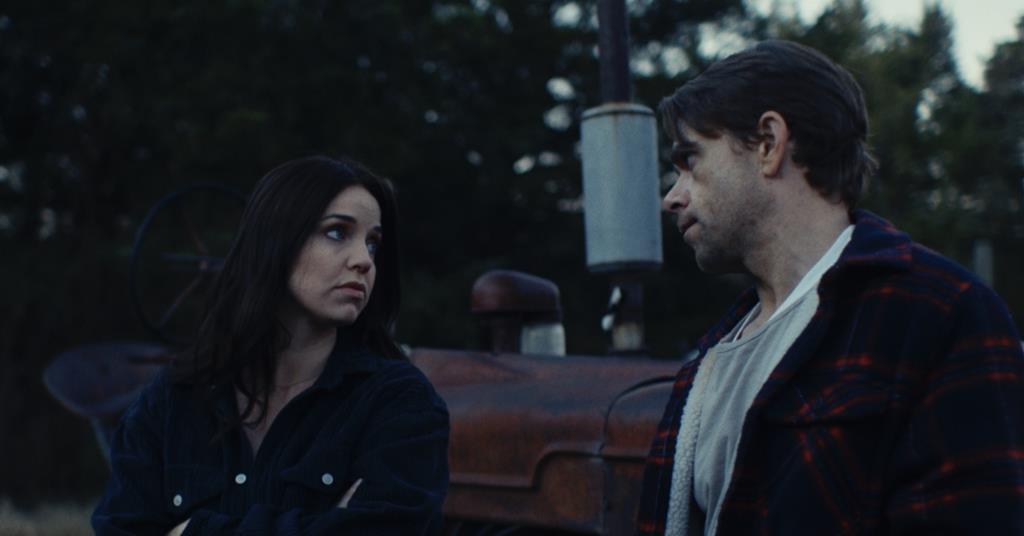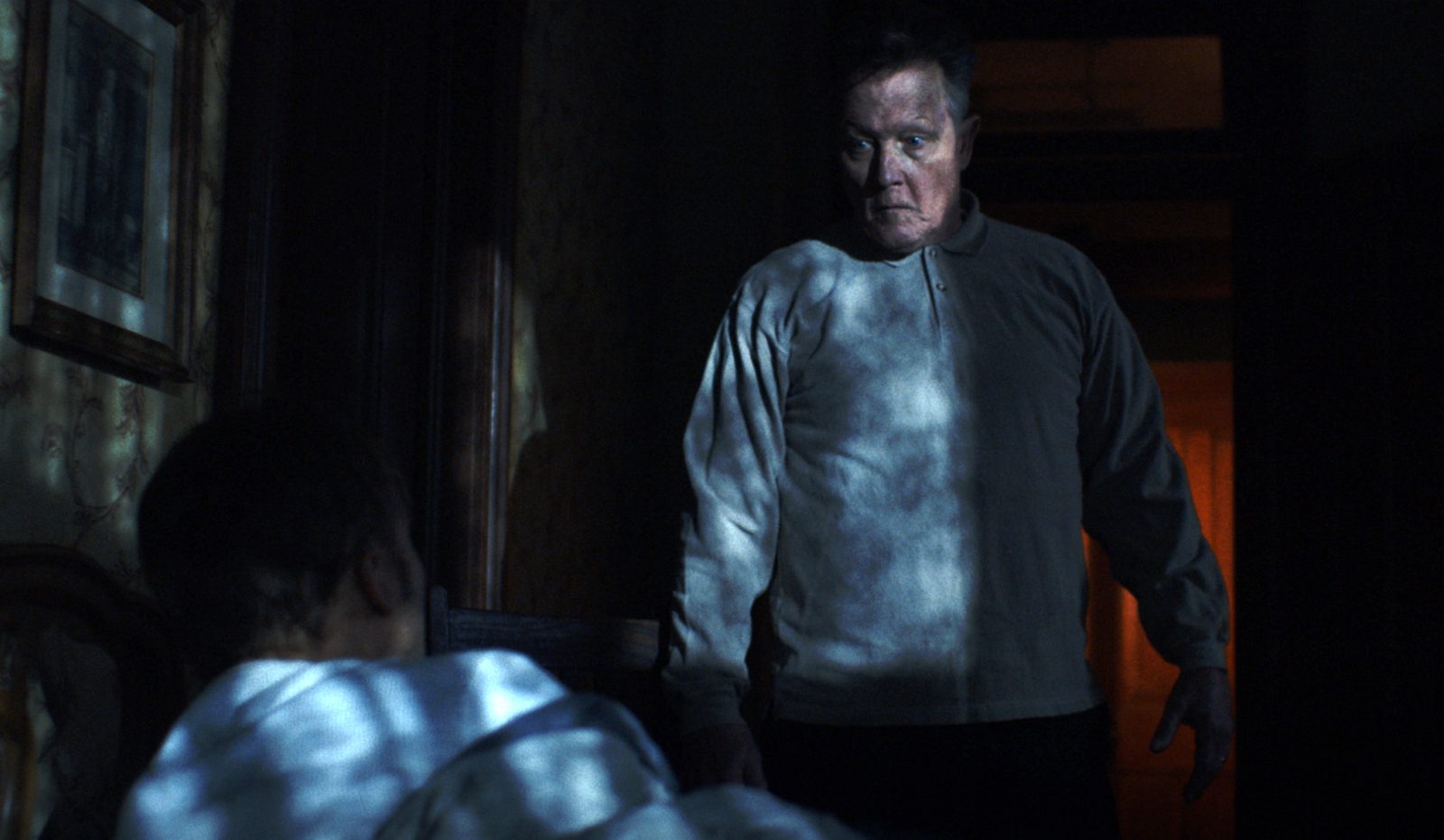By Thomas Puhr.
In short, wildly inconsistent. But at its best, it’s something to behold; more akin to a Southern Gothic short story of the William Faulkner variety than a straight-up horror exercise.”
Given its vaguely connected story threads – each of which varies considerably in quality – Vincent Grashaw’s What Josiah Saw (2021) is perhaps best appreciated as something of an anthology film. Following the exploits of an especially dysfunctional Oklahoman family, the director’s third feature exhibits moments of chilling artistry, though a lack of narrative cohesion dulls its cumulative impact.
The nucleus around which the three stories revolve is the Graham residence, occupied by reclusive patriarch Josiah (a most welcome Robert Patrick, who seems eager to sink his teeth into the role) and his youngest son, Thomas (Scott Haze). Their uneventful existence – minus the occasional visit to town, the two live in squalid isolation – is upended by the titular vision; early in the first act, Josiah claims to have had a life-changing vision of his dead wife. She’s burning in Hell, he informs his son, though an angel (or demon?) has told him what the family needs to do in order to save her soul.

This opening chapter, forebodingly titled “The Ghost of Willow Road” is effectively acted and shot, if a bit rote. The isolated farmhouse. The screeching violins. The murmuring, suspicious townsfolk. We’ve seen this all before, and done much better (the film has been compared, somewhat reductively, to Bryan Bertino’s 2020 sleeper, The Dark and the Wicked). Screenwriter Robert Alan Dilts’ decision to switch gears and follow the other Graham children’s lives outside the farm, therefore, comes as an unexpected blast of fresh air.
Which brings me to the film’s middle (and longest, and best) chapter, “Eli and the Gypsies.” This segment, nearly an hour in length, is worth the price of admission alone. I almost wish it could have been fleshed out to feature-length, though I can’t help but wonder if it works so well precisely because of its position in the overarching family saga. A nearly unrecognizable Nick Stahl plays Eli, the elder Graham brother. When we first see him, he’s on the outs: on probation, jobless, and up to his eyeballs in debt to the sinister Boone (Jake Weber, also most welcome, also relishing the chance to play such a nasty character).
Boone has a job offer/demand for Eli: to help a few of his criminal associates rob a gypsy carnival (yes, you read that correctly). It’s an outlandish setup, one which allows Grashaw and Dilts to blend a number of subgenres into a heady brew. Part neo-Western (word has it the gypsies are hoarding a secret stash of gold bars), You Were Never Really Here-adjacent revenge thriller (a local girl who has gone missing is thrown in the mix), and ghost tale (Eli encounters, among other assorted characters, a medium who peeks into his sordid past), the sequence is a strange, meandering detour in the best possible sense. This is when the director and screenwriter really let it rip – that is to say, all parties on either side of the camera appear to be having a blast. On paper, Eli’s story should be a mess, but it works. And it’s exhilarating.
What Josiah Saw’s third chapter, “Mary May I,” is all the more disappointing on the heels of this impressive midsection. Kelli Garner is Mary Milner, Josiah’s estranged daughter. Married, living in a suburban sprawl, and in the process of adopting a child, she initially seems to be the most well-adjusted (i.e. distanced) of the children. But when Eli shows up at her doorstep with a letter from the oil company that wants to buy the family homestead (this, we learn, is what brings everyone together), she’s sucked back into her mysterious childhood trauma. Despite a committed performance from Garner, this final passage is abrupt and underdeveloped. One suspects that the writer and director were too impatient – too eager to get to their climax – to give this narrative thread the time it deserves. And it’s too bad, because it exhibits some of Dilts’ strongest writing. Garner, for example, delivers an intriguing monologue about her hopes and fears as a soon-to-be mother: “There’s a hollow inside me,” she says. “I can’t ever fill it, not even with a child. It burrows.”

The film all but falls apart when the three Graham children reunite at the farm. Rather than focusing on Thomas, Eli, and Mary – all of whom, thanks to the committed actors, we’ve become at least moderately invested in – Dilts seems preoccupied with packing in more twists (and sub-twists, and twists within twists) than his family drama can reasonably sustain.
What Josiah Saw is, in short, wildly inconsistent. But at its best, it’s something to behold; more akin to a Southern Gothic short story of the William Faulkner variety than a straight-up horror exercise. Its pieces may not all come together, but a few of them shine with a jagged brilliance that’s difficult to ignore, and hard to forget.
Thomas Puhr lives in Chicago, where he teaches English and language arts. A regular contributor to Bright Lights Film Journal, he has published “‘Mysterious Appearances’ in Jonathan Glazer’s Identity Trilogy: Sexy Beast, Birth and Under the Skin” in issue 15.2 of Film International.

